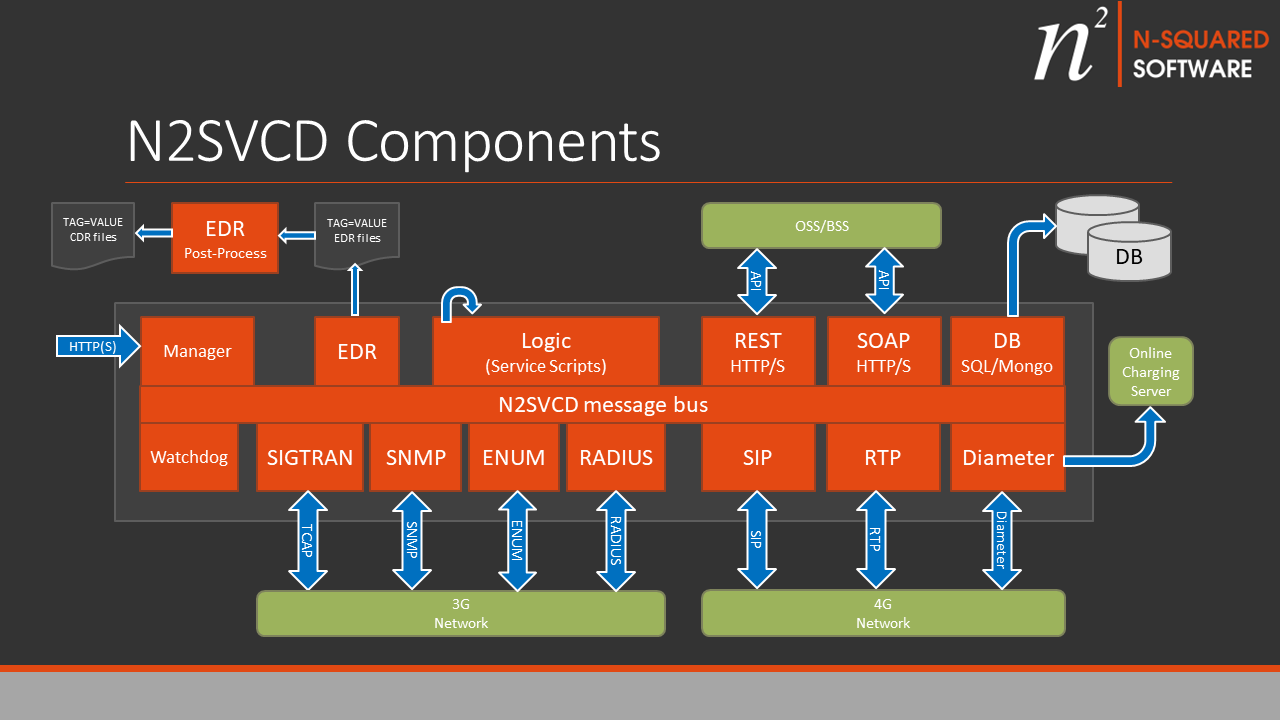Overview
The N-Squared Service Daemon (N2SVCD) is a general purpose framework providing the run-time message-passing service and protocol interfaces for the various N-Squared product solutions.
This framework is used for all of the N-Squared Products.
This Technical Guide describes the installation and configuration of the N-Squared N2SVCD
Service Dameon and base components in the n2svcd package.
Some individual products also deliver product-specific applications which also integrate with this N2SVCD IPC message bus to provide additional protocol integration or service functions.
N2SVCD Applications
The N2SVCD framework package provides the common message-passing layer, the multi-purpose applications shown here, and also provides the common Application libraries on which each of the purpose-specific N-Squared product applications are constructed.

The following common applications are used for system administration and base functionality:
- WatchdogApp - Start/Restart/Shutdown/Heartbeat other applications. This is a mandatory application.
- ManageApp - View and configure running applications. This is not mandatory, but is recommended.
- EdrApp - Used for collating and logging Event Data Records to an on-disk file stream.
The n2svcd package also includes the following base-protocol applications which are used by one or
more of the N-Squared Products.
- SigtranApp - Agent for delivery of TCAP over SIGTRAN for CAMEL/INAP & MAP.
- DiameterApp - Agent for sending DIAMETER requests to DIAMETER servers.
- SMPPApp - Agent for sending/receiving SMPP requests (both Client and Server modes).
- DBApp - Agent for sending asynchronous Database requests (DBI & Mongo).
- DnsServerApp - Agent for handling inbound ENUM/DNS Requests.
- DnsSoapServerApp - Agent for handling inbound ENUM/DNS Requests.
- RestServerApp - Agent for handling inbound REST Requests.
- SoapServerApp - Agent for handling inbound SOAP Requests.
- RestClientApp - Agent for sending outbound REST Requests.
- SoapClientApp - Agent for sending outbound SOAP Requests.
The SIP and RTP applications are described in the N2SIP Technical Guide.
The LogicApp is the common application scripting framework and SDK which is the run-time for the N-Squared products.
- LogicApp - Executes Lua service scripts.